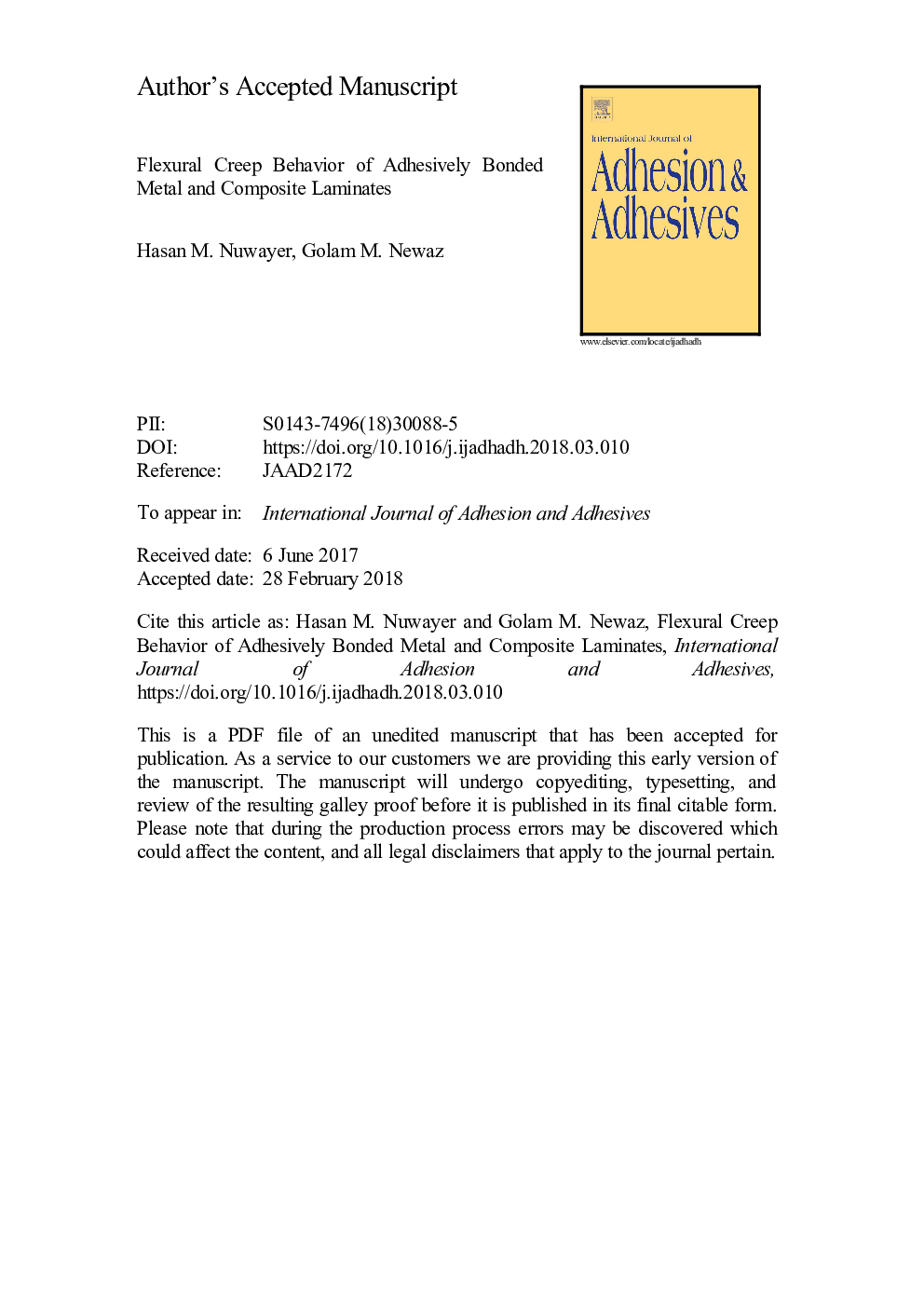| Article ID | Journal | Published Year | Pages | File Type |
|---|---|---|---|---|
| 7170904 | International Journal of Adhesion and Adhesives | 2018 | 19 Pages |
Abstract
Adhesively bonded structures exhibit time dependent behavior when subjected to constant load (creep). In this investigation, long-term creep behavior of adhesively bonded aluminum and carbon fiber composite beams under flexural loading was predicted. Three-point bending test was selected because of its simplicity and the fact that bending stresses are quite common. In this study, two types of adhesively bonded beam specimens were tested: specimens prepared by adhesively bonding two aluminum beams and specimens prepared by adhesively bonding two unidirectional carbon fiber laminated beams. Accelerated creep tests were performed at higher temperatures up to 60â¯Â°C and deflection was measured as a function of time for both types of specimens. Time-temperature superposition principle (TTSP) was used to construct the master curves to predict longer-term creep response of the adhesively bonded beams. Prony series was used to model the master curve by non-linear least square fitting. The analytical results showed good agreement with finite element results where ABAQUS software was used to model the flexural creep response of the adhesively bonded beams.
Keywords
Related Topics
Physical Sciences and Engineering
Engineering
Mechanical Engineering
Authors
Hasan M. Nuwayer, Golam M. Newaz,
